An essential survival skill you can learn is foraging. Foraging is the art of finding edible food sources from your surroundings. This requires a great knowledge of plants and different habitats. It also requires great knowledge of seasonal variations, and how different weather conditions can affect plant life and its edibility. A great place to start, however, is to learn about the top edible plants you can find foraging. This will give you an excellent start and develop your foraging knowledge.
1. Dandelion
No list of edible foraging plants would be complete without dandelion. It is one of the most abundant plants on this list and you can also find it any time of the year. Dandelion is a weed and thus it spreads – you can often find entire fields of the plant.
They are also easy to identify with their characteristic large yellow flowers. In terms of taste, dandelion is quite bitter although the taste should improve the more you eat it. It is generally advised to cook the leaves in a similar manner to spinach.

2. Elderflower
Elderflower is another common plant that you have most likely heard of. It is often made into a tasty and refreshing drink such as an elderflower press.
This flower actually comes from the elder tree that is common in temperate climates and the UK. You can often find elder trees in woodland or even on roadsides in hedgerows.
The easiest way to identify elderflower is by its noticeable white flowers. They have a beautiful colour and the flowers appear in clusters – the fragrance is also sweet and pleasant.
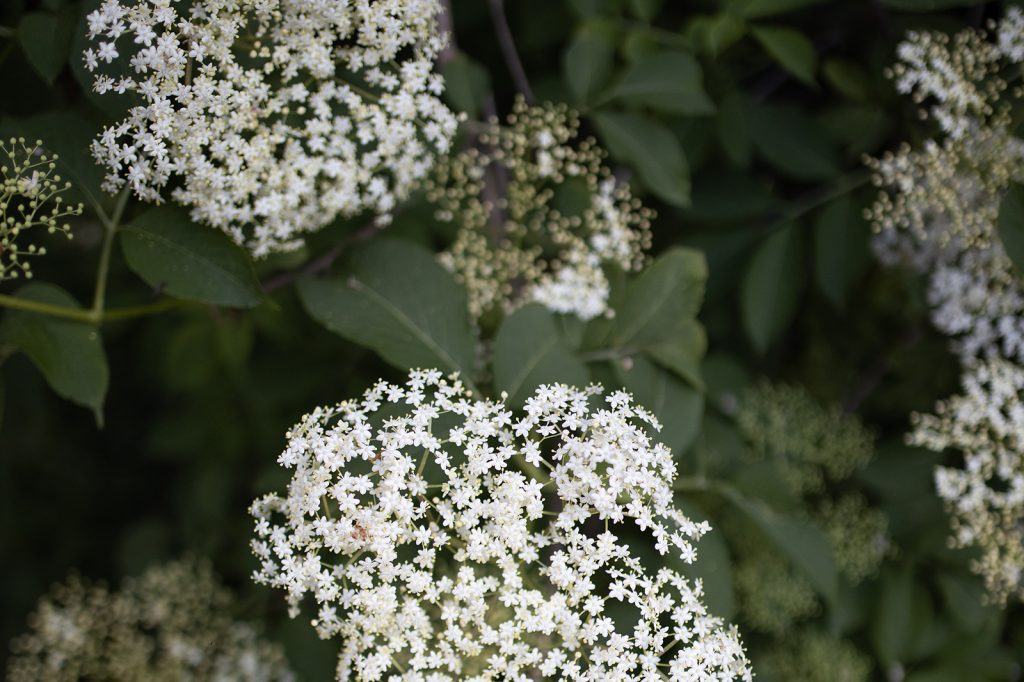
3. Stinging Nettle
How often have you walked along a trail and actively avoided the common nettle? This plant is famed for causing skin irritation. However, it is also a brilliant food source and one of the top edible plants you can find foraging.
Nettles are commonly found in the UK throughout the year. You should also easily be able to identify them – perhaps even from childhood experiences of being stung!
It is better to eat nettles from November to May. From June to October, they can create a laxative effect that can upset your stomach. However, when edible, they have a strong but unique taste.

4. Sorrel
There are many varieties of sorrel – sheep’s sorrel, common sorrel, wood sorrel, and pink sorrel, for example. Common sorrel is readily found in temperate climates in the spring, summer, and autumn.
Any type of sorrel is edible, and it generally has a lemony flavour that has a little tartness – some people say it tastes like an apple peel. Sorrel is an excellent source of both iron and vitamin C. You can eat the leaves, stem, and flowers of this plant.
It is recommended to only eat raw sorrel in moderation, however. This is due to the higher oxalic acid content.

5. Clover
Clover is a common plant found in the UK but we mean the standard variety – not the four-leaf clover. You can find clover throughout the year and it is often found in meadows, fields, and woodland.
Clover leaves are generally small and round, and you usually find them in a trifoliate configuration (I.e. three leaves together on a stem in a triangular formation). Clovers often have flowers too which are usually pink, purple, or light shades of red.
Clover leaves taste gassy, and the flowers can taste quite sweet.
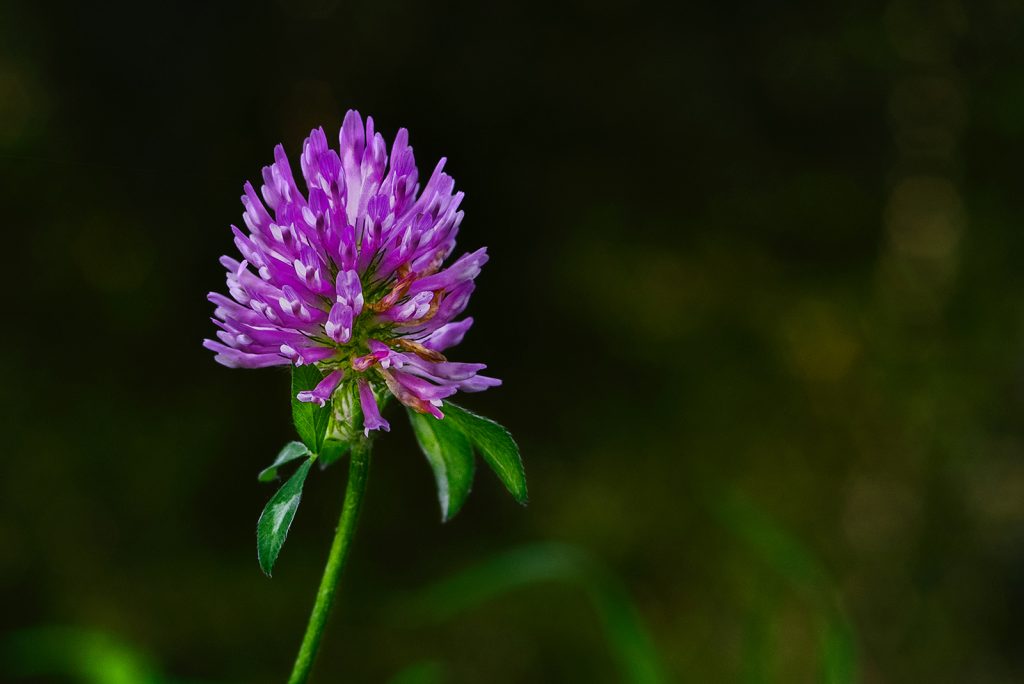
6. Cattail Shoots
Cattail shoots are not as abundant but they are an excellent food source as every part of the plant can be used. Cattails are identified by their long slender shoots, and the thick, brown buds. These buds do look like a cattail if you use your imagination!
This plant is actually classed as grass, and you can generally eat the flowers, buds, and shoot without any issue.
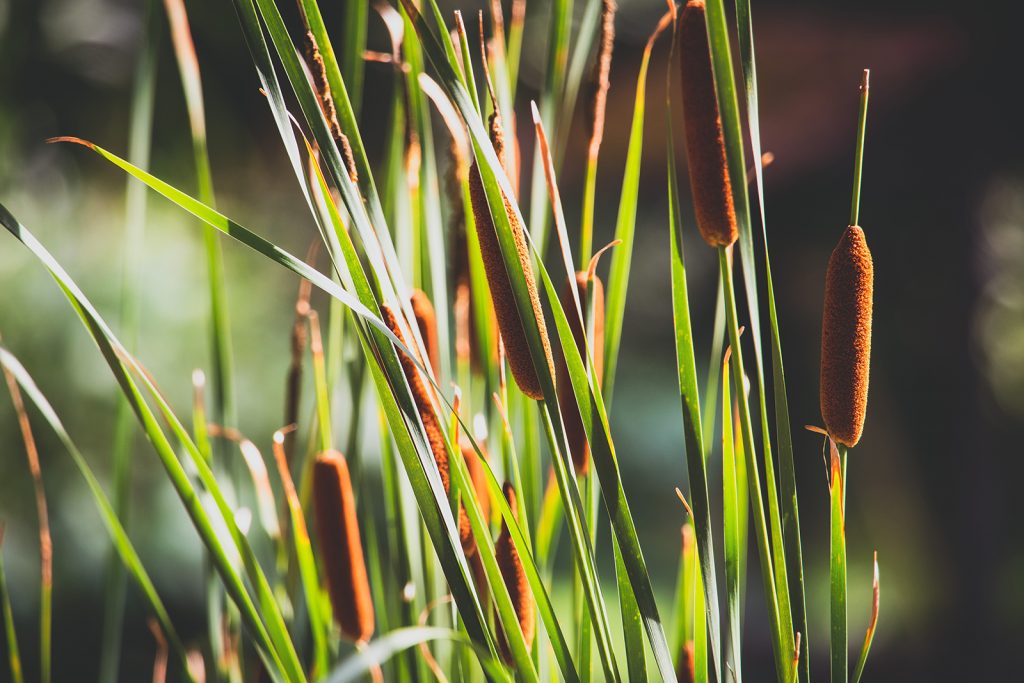
7. Yarrow
Yarrow is another relatively easy plant to identify due to it’s feathery leaves that almost look like ferns. The white flowers of this plant will flourish from June to October.
For identification, the flowers are long and feathery, whilst the flowers form in small clusters and are usually either white or pink.
In terms of taste, yarrow is quite neutral and not as strong as some other plants. You can also eat any part of the plant, and it has some good medicinal properties. For example, it can be used to help stop nosebleeds.
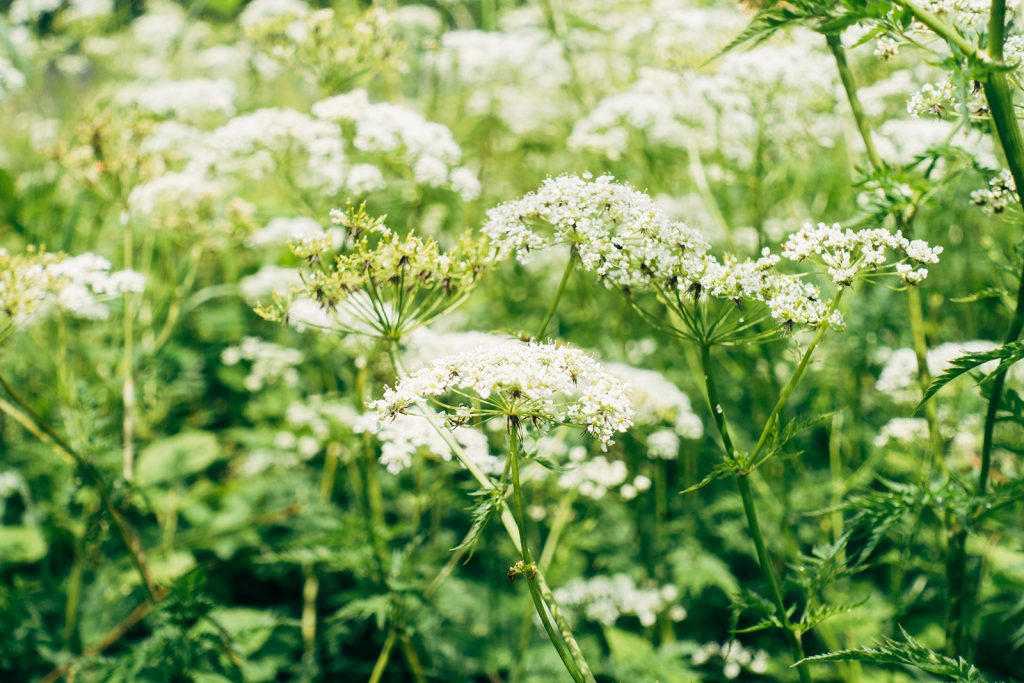
8. Wild Garlic
Wild Garlic is one of the top edible plants you can find foraging due to its abundance, strong aroma, and strong taste. You can find wild garlic generally from early spring through to mid-summer (usually February to June) in temperate climates.
It is usually found in wooded areas. Particularly damp deciduous woodland that is near a water source like a stream.
The characteristic white pointed flower petals are easy to spot, and you should also notice the smell. This plant has a strong, hot taste and you can eat the entire plant. It is best eaten when cooked which lessens the garlicky taste that some people may not like.

9. Burdock
You have probably heard or even tried the popular drink dandelion and burdock? Guess what, burdock is edible and a decent foraging plant!
Burdock is considered a weed and it typically grows in Autumn and Winter from September to December. It has large dark green leaves that are slightly lighter underneath. Also, during the autumn it has vibrant purple flowers that look like thistles.
The roots are the most commonly eaten part of burdock. They have an earthy taste similar to parsnip or sweet chestnut.
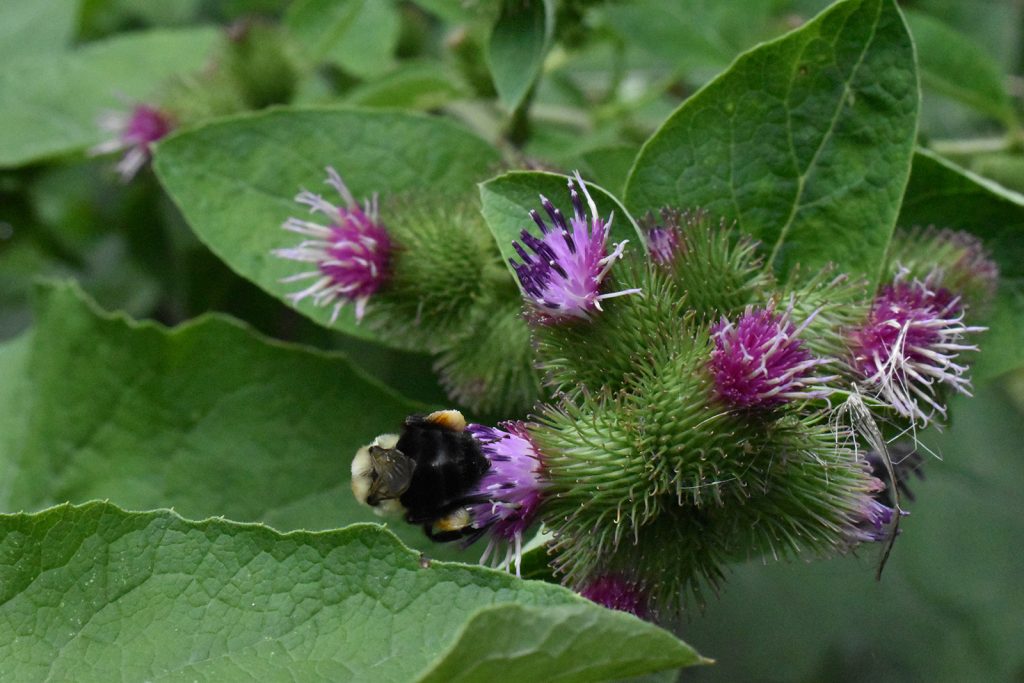
10. Daisy
Lastly, we have the common daisy. These are other plentiful flowers that can be found in most areas in the UK – all year round.
You should have no issue identifying daisies due to their beautiful white flower petals and bright yellow pollen buds in the centre.
The leaves and flowers of daisies are edible and it is another flower that has a relatively neutral and medicinal taste.
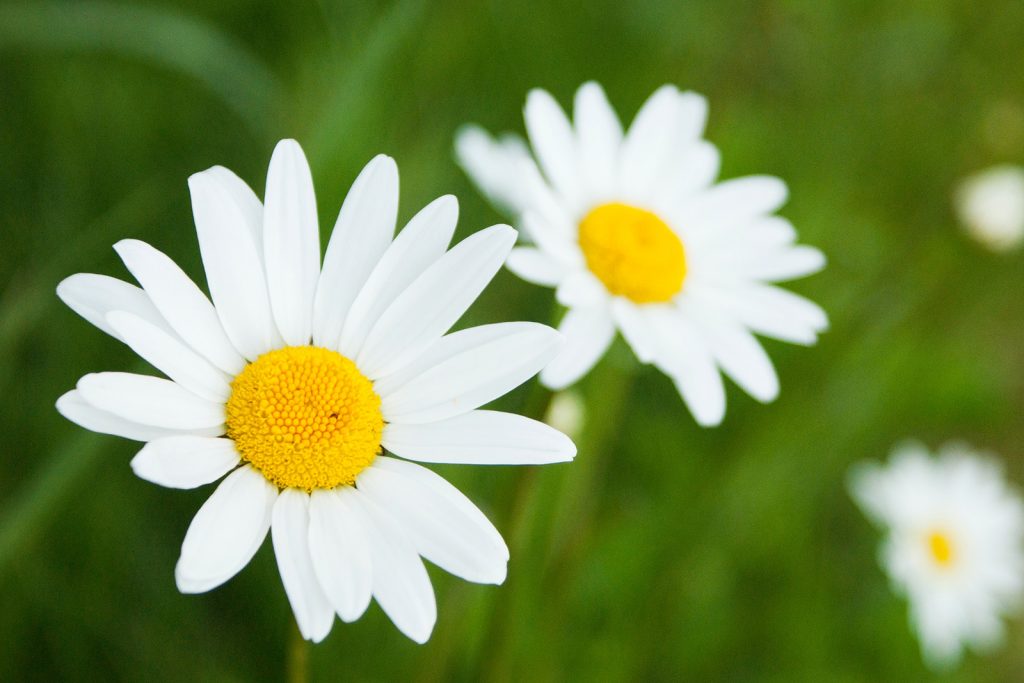
Top Tips for Foraging
Now that we have looked at the top edible plants you can find foraging, let’s look at some basic tips. Foraging is a challenging skill. It takes time and effort to master and you must be careful.
If you pick the wrong type of plant the result could be fatal! However, foraging can also be incredibly rewarding. The following are some basic tips to remember when you venture outdoors on a foraging trip.
Check, check again, and leave if in doubt!
The golden rule for foraging is to double-check your findings and leave if you are in any doubt. As mentioned above, misidentifying a plant could potentially be fatal.
You could potentially eat a poisonous plant that could kill you. This is of course the worst-case scenario. However, even picking a mildly inedible plant could lead to health complications like diarrhoea.
Only eat a plant if you are 100% sure you have identified it correctly. Also, make sure you are 100% positive on how to prepare the plant, and which parts are edible.
Be sustainable and leave some for the animals
When foraging, you must be conscious of your surroundings. Consider the plants and the wildlife. You do not want to adversely affect the area you are foraging in any way.
As a result, you should always only take what you need. Never strip or destroy a plant completely. Simple take some of the leaves, but leave the roots and stem intact, for example. This will make sure the plant doesn’t die. It also makes sure that any animals that eat these plants still have a food source.
Slow and steady wins the race
Now that you have a newfound host of foraging skills, it is tempting to go wild. Oftentimes people jump in and start eating everything they can get their hands on.
We advise against this. Take your time. Don’t rush. The first few times you venture out foraging, take it easy. Perhaps concentrate on finding a couple of plants. This is not a skill that should be rushed – it is more important to build up your knowledge and test yourself at a steady pace.
Forage with an expert if possible
You can always benefit from an expert and their knowledge. If you know someone who is an expert in foraging, ask them to accompany you on your first few ventures.
Having someone with you who has successfully foraged for years is a brilliant confidence booster. It also acts as a safety net as they can guide you and prevent you from picking potentially dangerous foods.
Always try a small portion first, before making a meal
Lastly, it is advisable to sample a small piece of the plant first. Don’t simply jump right in and eat the entire plant! Prepare a small portion – a single bite, for example first.
This allows you to sample the plant and see what effect it has on your body. If you have picked an inedible plant by mistake, it should become immediately apparent when you sample it. Also, by only eating a small amount, you can limit any potential harm.
Test Your Survival Skills and Find These Edible Plants!
We hope you have found this guide on top edible plants you can find foraging useful. Foraging is a fun and interesting skill to learn. You learn about the wonders of nature and improve your knowledge of plant life and different habitats.
Also, you can develop your survival skills and get prepared if you want to undertake a survival challenge. The next time you enjoy a hike or an outdoor adventure, why not put these skills to practice? You could spend time foraging and trying to pick out some of the edible plants we have mentioned.

